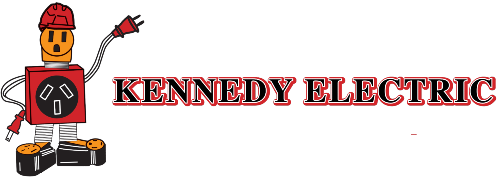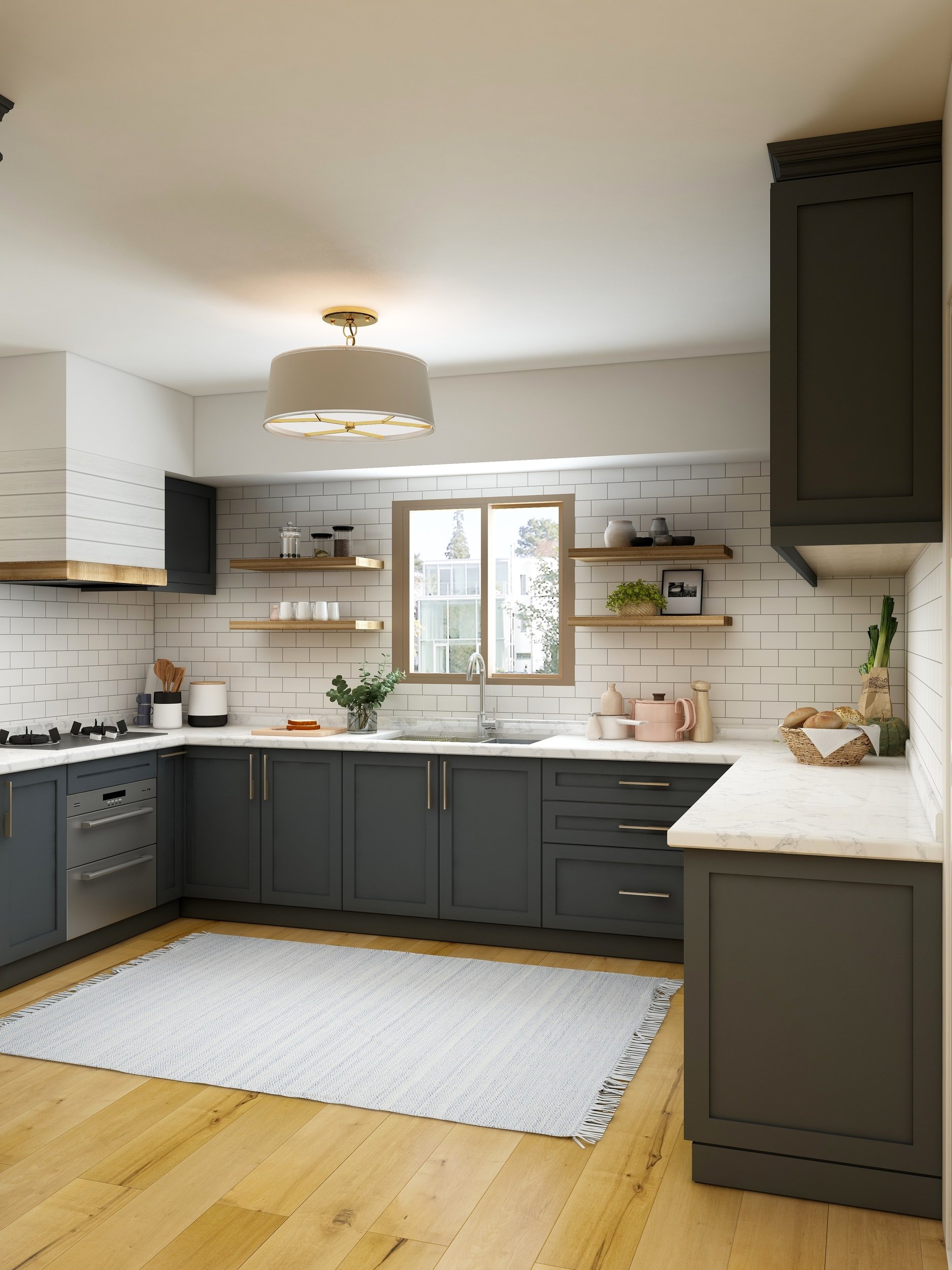What’s the Buzz on Kitchen Electrical Code Requirements?
The electrical codes are updated every three years to match the modern kitchen requirements. Always check with the local authorities for the electrical code requirements.
Let’s be honest: the kitchen is where the magic happens- and sometimes, electrical mishaps try to steal the show. With every coffee maker, toaster, and blender vying for attention, your kitchen’s electrical system works harder than any other room. The National Electrical Code (NEC) kitchen circuit requirements are necessary. They aren’t just arbitrary rules dreamt up by people who never cook; they’re the backbone of a safe, modern kitchen.
Understanding the Ever-Evolving Kitchen Electrical Code Requirements
Every three years, the NEC gets a facelift. Think of it as the electrical world’s version of a trendy new haircut- only instead of impressing your friends, it keeps your home safe and your insurance company happy. The National Fire Protection Association (NFPA) updates the code regularly to reflect new technology, emerging hazards, and the reality that no one wants to run an extension cord across their countertop to plug in a waffle maker. Most states and municipalities adopt the NEC as their guiding light, but some areas add their local flavor. Before starting any kitchen project, consulting with local authorities or a licensed electrician is always a wise move.
Why Kitchen Electrical Requirements Matter
Kitchens are the powerhouses of the home. Between the fridge, oven, dishwasher, and that fancy espresso machine you swore you’d use every morning, the kitchen’s appetite for electricity is insatiable. Poorly designed circuits or outdated wiring can lead to overloaded breakers, damaged appliances, or electrical fires in the worst-case scenario. The NEC code for kitchen circuits exists to prevent these disasters and ensure your kitchen is as safe as it is functional.
Small Appliance Circuits: The Unsung Heroes
The NEC kitchen circuit requirements specify that every kitchen must have at least two 20-amp, 120-volt circuits dedicated to countertop and eating area outlets. These workhorses keep your toaster, blender, and slow cooker running without a hitch. Relying on a single circuit for all your countertop gadgets is like expecting one person to cook Thanksgiving dinner alone. Eventually, something’s going to burn out.
Strategically placed outlets are another hallmark of the kitchen outlet code requirements. NEC rules state that no point along the countertop should be more than four feet from an outlet. You can plug in your mixer or food processor without performing Olympic-level stretches across the kitchen. Outlets must also be installed no more than twenty inches above the countertop to keep cords tidy and out of harm’s way.
The Kitchen GFCI Code: Your Safety Net
GFCI (Ground Fault Circuit Interrupter) outlets are the heroes of kitchen safety. The code for GFCI outlets in the kitchen requires that all outlets serving countertop surfaces be GFCI-protected. Why? Because kitchens are wet, unpredictable places. A spilled cup of coffee or an overzealous sprayer can turn a regular outlet into a hazard faster than you can say “short circuit.”
GFCI outlets constantly watch the flow of electricity. If they detect even a tiny imbalance, like current leaking through water or a person, they shut off power instantly. It’s like having a vigilant lifeguard for your kitchen circuits. The kitchen GFCI code also extends to outlets within six feet of a sink, ensuring that even the most creative splashes won’t lead to disaster.
Lighting Circuits: Let There Be Light (and Code Compliance)
Every kitchen needs at least one dedicated lighting circuit. The NEC recommends a minimum of a 15-amp, 120-volt circuit for lighting. While light fixtures don’t draw nearly as much power as appliances, a separate circuit ensures you won’t be left in the dark if a countertop appliance trips a breaker. More elaborate lighting setups, think under-cabinet LEDs or statement pendant lights, may require additional circuits or higher amperage. However, the kitchen electrical code requirements do not mandate GFCI protection for lighting circuits.
Tamper-Resistant Outlets: Because Curiosity and Forks Don’t Mix
Children are naturally curious; unfortunately, electrical outlets are just the right height for little fingers and foreign objects. The NEC kitchen requirements now mandate tamper-resistant (TR) outlets for all 15- and 20-amp receptacles in kitchens, including countertops, walls, and hallways. These outlets have built-in shutters that block anything except a proper plug. It’s a simple upgrade that can prevent a world of trouble- and a trip to the emergency room.
Dedicated Circuits for Major Appliances: No Freeloaders Allowed
Modern kitchens are packed with heavy-duty appliances, each with its electrical demands. The NEC code for kitchen circuits insists on dedicated circuits for these power-hungry machines. Here’s a quick rundown of what the electrical code for kitchen outlets expects:
Dishwasher: It requires a GFCI-protected circuit, typically 15-amp, 120-volt, wired with 14/2 cable. If your model calls for more juice, the circuit and wiring must match.
Microwave: It needs a dedicated 20-amp, 120-volt circuit wired with 12/2 cable. Microwaves are notorious for tripping breakers when they share circuits with other appliances.
Electric range: One of the biggest energy hogs in the kitchen, an electric range demands a 50-amp, 120/240-volt circuit. Proper wiring is essential, and while GFCI protection isn’t required here, everything else must be up to code.
Garbage disposal: Like the dishwasher, the garbage disposal gets a 15-amp, 120-volt dedicated circuit. These machines draw much power during startup, so sharing a circuit is a recipe for tripped breakers.
Refrigerator: The NEC doesn’t always require a dedicated circuit for the fridge, but most electricians recommend one. A 15- or 20-amp, 120-volt circuit will keep your food cold and your breakers happy.
Oven, wall oven, or cooktop: Each appliance typically needs its dedicated circuit, sized according to the manufacturer’s specifications and the NEC kitchen circuit requirements.
Spacing and Placement: Outlets Where You Need Them
The kitchen outlet code requirements go beyond counting outlets—they also dictate where to put them. Outlets should be installed along any countertop twelve inches or wider, and no point along the counter should be more than 24 inches from an outlet. Islands and peninsulas need outlets, too. The NEC kitchen requirements specify at least one outlet for every island or peninsula with a countertop area of 24 by 12 inches or more. No more crawling under the table to plug in your stand mixer.
A Word about AFCI Protection
While GFCI outlets guard against shock, Arc Fault Circuit Interrupters (AFCIs) safeguard against electrical fires caused by arcing faults. The NEC now requires AFCI protection for most kitchen circuits, including those serving outlets, lighting, and appliances. AFCI breakers or outlets detect dangerous arcs and shut down the circuit before sparks can fly. It’s another layer of safety that keeps your kitchen- and your home- out of harm’s way.
The Importance of Proper Wiring and Load Calculation
Meeting the NEC kitchen circuit requirements isn’t just about ticking boxes. Proper wiring and load calculation are essential for a safe, reliable kitchen. An experienced electrician will evaluate your kitchen’s needs, factor in the wattage of all appliances, and design circuits that can handle the load without breaking a sweat. Undersized wiring or overloaded circuits can lead to nuisance tripping, damaged appliances, or worse.
Grounding and Bonding: The Unsung Safety Features
Grounding and bonding may not be glamorous, but they’re essential for kitchen safety. The NEC kitchen requirements ensure that all outlets, appliances, and metal components are properly grounded and bonded. This means that, in the event of a fault, electricity has a safe path to follow-straight to the ground, not through you or your shiny new refrigerator.
Upgrading Old Kitchens: Don’t Let Nostalgia Get in the Way of Safety
Older homes often have charming kitchens but hide a host of electrical sins behind the walls. Common issues include outdated wiring, insufficient circuits, and a lack of GFCI or AFCI protection. Bringing an old kitchen up to code isn’t just a matter of swapping out a few outlets. It often requires a full electrical evaluation, rewiring, and panel upgrades. The peace of mind and the protection for your family and investment are well worth the effort.
Why Hiring a Professional Matters
Kitchen electrical work is not the place for shortcuts or guesswork. The NEC kitchen requirements are detailed for a reason: safety. A licensed electrician understands the nuances of the code, keeps up with local amendments, and ensures every wire, outlet, and breaker is up to snuff. Attempting to DIY your kitchen wiring might seem tempting, but the risks outweigh the rewards. Professional electricians have the training, tools, and experience to deliver a kitchen that’s safe, functional, and fully compliant with the latest kitchen electrical code requirements.
Staying Up to Date with Kitchen Electrical Code Requirements
Kitchen trends come and go, but safety never goes out of style. The NEC kitchen circuit and outlet code requirements evolve with technology and how we live. Smart appliances, induction cooktops, and high-powered gadgets are becoming the norm, and the code adapts to keep pace. Partnering with a knowledgeable electrician ensures your kitchen isn’t just beautiful and functional but also built to last.
Final Thoughts: The Recipe for a Safe, Code-compliant Kitchen
Designing or remodeling a kitchen is an exciting adventure and a serious responsibility. The NEC kitchen requirements, kitchen GFI code, and kitchen circuit requirements exist to protect you, your family, and your investment. By understanding the essentials and working with a qualified professional, you can whip up a kitchen that’s as safe as stylish. So go ahead, dream big—just make sure your electrical system is ready to handle whatever culinary masterpieces you throw its way.
And remember, safety is always the secret ingredient when it comes to kitchen electrical requirements.
Trust Kennedy Electric for expert hot tub electrical, exhaust fan installation, ceiling fan installation, whole-house electrical surge protection, GFCI outlet installation, and other residential electrical services in Citrus, Hernando, and Pasco Counties. Book a service by calling us at 352-799-3434.


